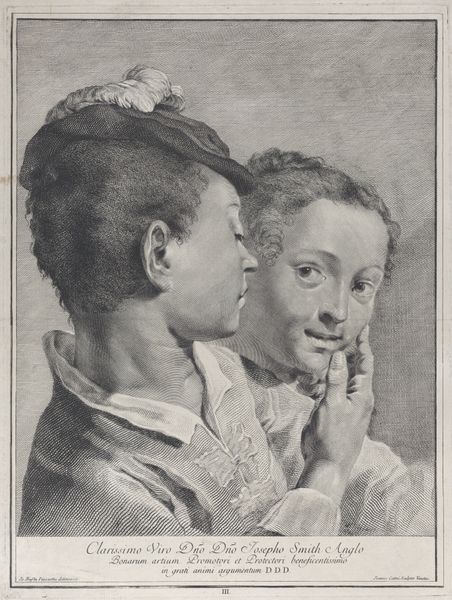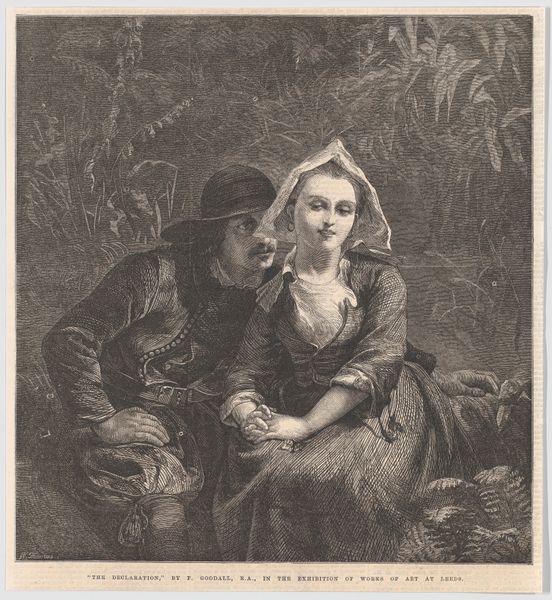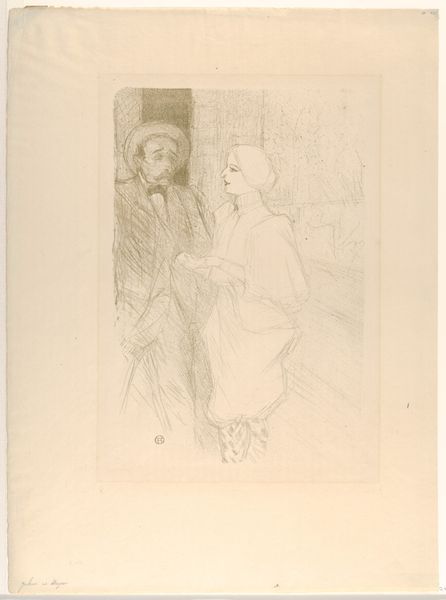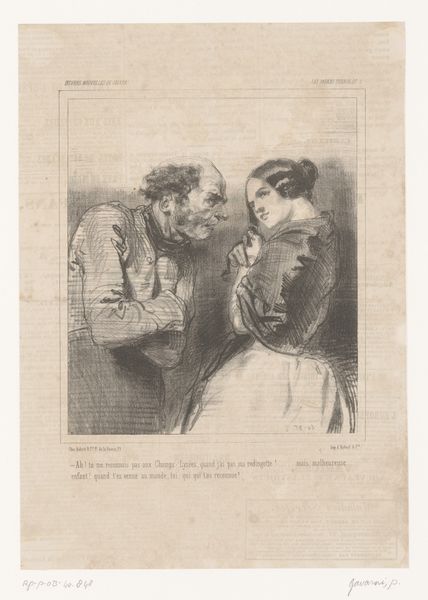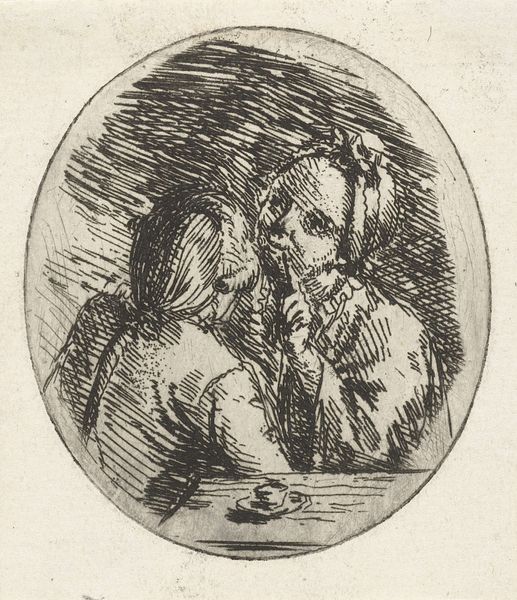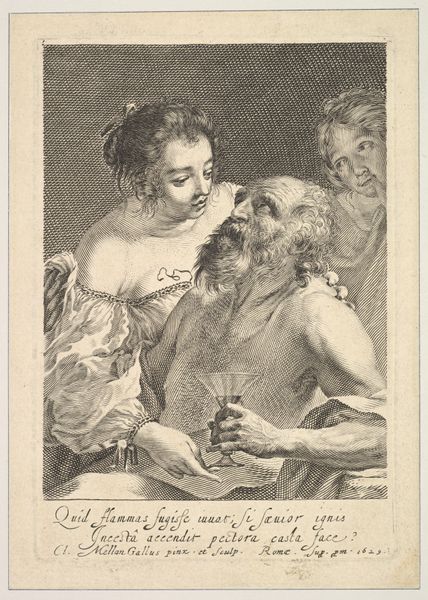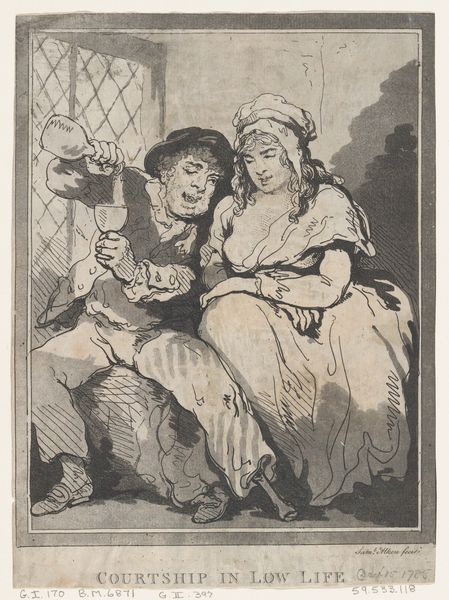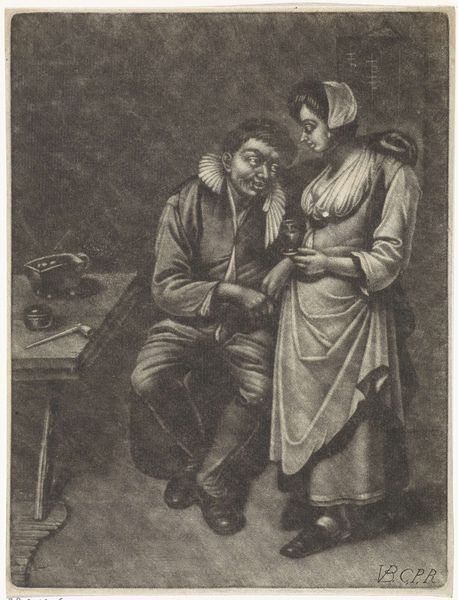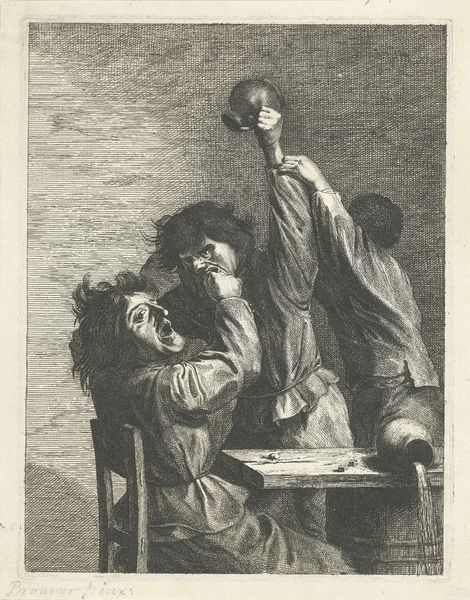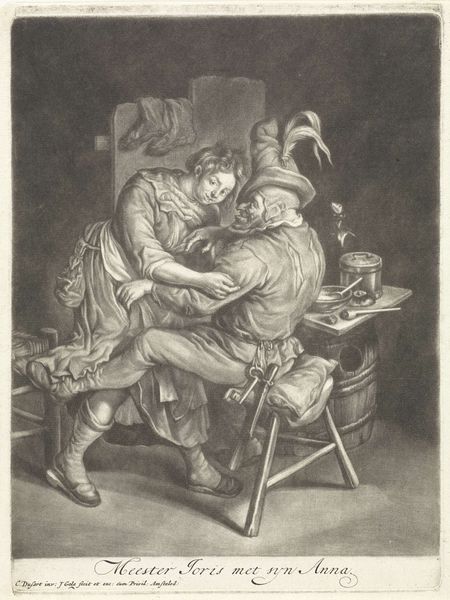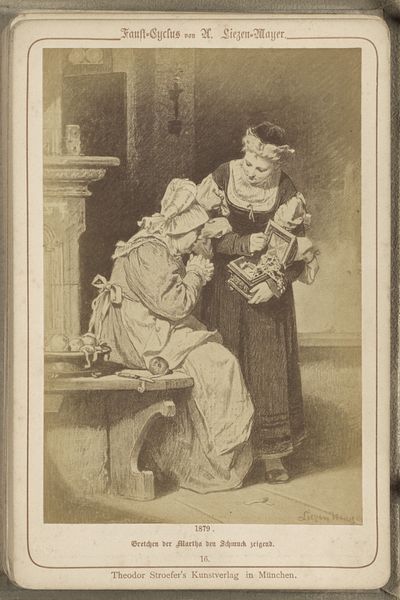
A schoolgirl and her music teacher looking at a sheet of music 1725 - 1780
0:00
0:00
drawing, print, etching
#
portrait
#
drawing
#
baroque
#
portrait image
# print
#
etching
#
portrait drawing
#
genre-painting
Dimensions: Plate: 13 9/16 × 10 5/16 in. (34.5 × 26.2 cm) Sheet: 16 7/8 × 13 1/4 in. (42.8 × 33.7 cm)
Copyright: Public Domain
Curator: This print captures an interesting dynamic. It's "A schoolgirl and her music teacher looking at a sheet of music," a piece attributed to Joseph Wagner, dating roughly from 1725 to 1780. It's currently residing at the Metropolitan Museum of Art. Editor: My first impression is one of quiet contemplation. The light falls softly on their faces, highlighting the focused gazes of both the girl and her teacher. It feels very intimate, almost as if we're intruding on a private lesson. Curator: Indeed, the tonal gradations, achieved through meticulous etching, create a sense of depth and intimacy. Notice how the artist uses cross-hatching to build up shadows, particularly around the teacher’s face and turban, which adds to the tactile quality of the print. Editor: And the relationship it portrays is fascinating. Is the teacher merely instructing, or is there something more happening between these two figures, particularly if we read this image against the societal conventions regarding gender roles during the 18th century? The intimacy certainly allows for interpretation. Curator: A crucial socio-historical viewpoint! While ostensibly depicting an innocent scene of musical instruction, the power dynamics are far from neutral. The teacher, holding a magnifying glass, is in a position of authority but note how he also gazes upon his student's face as much as the musical notes on the sheet. This artistic moment raises pertinent questions about knowledge transfer, access to the arts, and possible flirtations within educational contexts. Editor: Precisely. Furthermore, the print medium itself is relevant. This was an era where printed images played a vital role in disseminating ideas and shaping public opinion. Consider who might have purchased such a print and the meanings they could derive from it. A portrait of a music student would signal a leisured education, in comparison to the lot of most young women in the period. Curator: The use of line and texture also contributes significantly to the artwork’s affect. There is great detail on their facial features. A striking semiotic reading. Editor: On reflection, looking again, what struck me most profoundly, beyond the sheer artistic mastery, is the implicit comment on cultural hierarchies it prompts me to consider: The representation of women in Baroque era prints and its contribution to larger dialogues. Curator: A wonderful reminder of how studying the composition enhances a consideration of art's profound public role in its era!
Comments
No comments
Be the first to comment and join the conversation on the ultimate creative platform.
